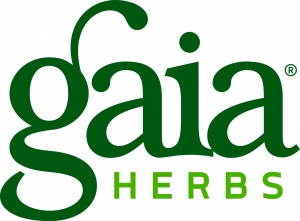Iron is an essential mineral to consume through our diet. Without enough iron in our body, we cannot make hemoglobin, the substance in red blood cells that carries oxygen throughout the body. Iron is also essential for delivering oxygen to all of our tissues and cells so that they can produce energy. It plays a role in our antioxidant systems, and is necessary for our cytochrome enzymes in our liver to process drugs, caffeine, and hormones. About 2/3 of the iron in our body is found in hemoglobin of red blood cells. The remainder is found in the liver, spleen, and bone marrow.
The only way we can eliminate iron from the body is through the blood (bleeding). We don’t have a way to get rid of excess iron in the body because it is always bound to proteins, and we can store excess iron as ferritin in the liver, and re-utilize it. We use ferritin first when the body is low in dietary iron. However, when we have too much circulating iron—either supplementary or dietarily—we store excess iron in the heart and pancreas (which is not good). It is a fine balance to make sure we are consuming enough, but not too much, iron in our diets everyday through a variety of different foods.
Plant-Based Iron vs. Animal Based Iron vs. Conventional Iron Supplements
Our body is highly capable of absorbing iron from food sources above all others, and the phrase, “You are what you eat”, is much more accurate when we say, “We are what we absorb”. Food-sourced iron is the ideal form for the body to utilize and is easier on the digestive system to process. Some foods that are high in iron include oysters, eggs, brown rice, kidney beans, lamb, blackstrap molasses, spinach, and lean ground beef.
Plant sources of iron (known as non-heme iron) are ideal for those following a vegetarian or vegan diet, and typically have slightly lower levels of iron content per serving.
Animal-based iron sources are a combination of non-heme and heme iron. Heme iron itself is generally easier to absorb, however the majority of our iron intake is non-heme iron (plant based+ eggs + dairy) with additional heme iron intake through red meat, if we are not following a vegetarian or vegan diet. One is not necessarily better than the other, but variety in our food choices is the key.
Conventional iron supplements are usually not derived from food sources, and contain approximately 18 mg-60 mg of iron per dose. These are made from iron fillings dissolved in sulfuric or hydrochloric acids. This renders a non-soluble form of iron that is then dehydrated into an iron salt. When we consume supplemental iron in this form, this is a concentrated dose of iron, often with tablet fillers included. Although supplemental iron is effective at raising our iron levels, the body has a hard time digesting single doses of iron salt without the accompanying minerals, nutrients, and antioxidants provided through whole food sources. Thus, side effects of conventional iron supplementation may include stomach pain and constipation, leading many to concurrently take a laxative alongside their iron supplement.
Considering Iron Supplements
There are many reasons we may be low in iron. Following a vegetarian or vegan diet, experiencing heavy monthly periods, and some red blood cell related conditions are common reasons our iron levels may be low. Pregnancy may also require extra iron in the diet or through supplementation. It is generally more common for women to need to supplement with iron (due to heavy monthly bleeding), while it is more uncommon for men to need iron supplementation. Blood testing is highly recommended before beginning to supplement with iron to know if there is a current deficiency.
When it comes to iron supplementation, quality and absorbability are the most important factors. You want them to be non-constipating, easy on the digestive system, and safe for use in pregnancy and breastfeeding women. Liquid formulas provide the advantage of being able to adjust your daily dose to exactly what you need. It is recommended that before you begin supplementing with iron, have your iron levels tested via blood testing to note if you are in fact deficient and in need of supplementation, and if so, what dose of iron you would require in supplement form. This is done through a CBC (Complete Blood Count). It is also helpful to have an Iron Panel (for serum iron, transferrin, total iron binding globulin capacity, and % saturation of your iron transport proteins) and having your ferritin tested (for stored iron) as well. After you begin supplementing with iron, have your iron levels re-checked every 3-4 months to note changes in your iron levels, and to know if you need to discontinue use once your iron levels are within a healthy range (and your diet has a good variety of iron rich foods included every day). If you are pregnant, have a medical condition or take medications, please consult with your health practitioner.
Share:
Related Posts

Goodbye Pie Chart, Hello Phase 1 Sliders
Written by Allison Smith, ND | 2025 As we usher in a new era of DUTCH testing which leaves behind the concept of the three-way

Introducing the DUTCH Dozen
Written by Kelly Ruef, ND | 2025 Hormone testing can be complex, which is why Precision Analytical developed the DUTCH Dozen, an interpretive framework that

DUTCH Report Enhancements
Written by Hilary Miller, ND | 2025 Precision Analytical have released the newest version of the DUTCH Test. This is the report’s most significant update

Gallbladder Health 101: What It Does and How to Keep It Working Well
Written by Ashley Palmer & Pooja Mahtani | 2025 The gallbladder may not get much attention compared to the gut, but it plays a central

Can You Bring Vitamins on a Plane? How To Travel with Supplements
Written by Austin Ruff | 2024 Are you traveling for a work conference, an athletic competition, or a weekend getaway? Just because you’re leaving home

